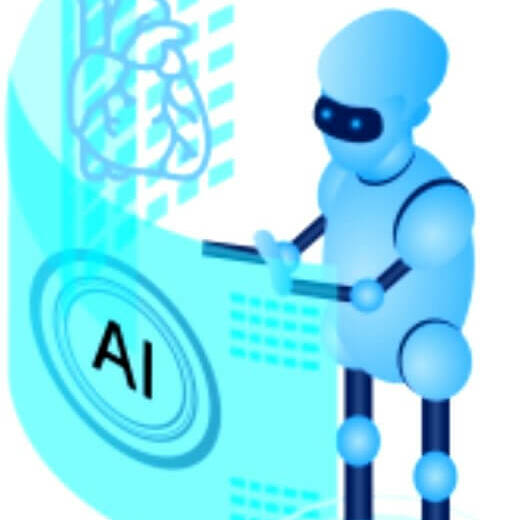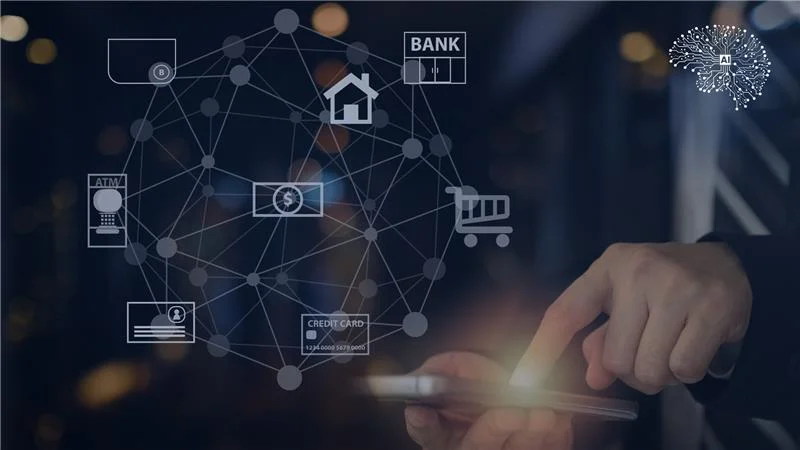Introduction
Medical science has come a long way since the invention of the stethoscope. Medical technology advancements over the years have changed the practice of medicine in many ways, while saving lives, expanding access to health care, and improving the quality of life for millions of people across the globe. However, in the past few decades, the field of healthcare has been experiencing rapid developments due to technological advancements, from antibiotics & anesthesia to MRI scanners and radiotherapy. Technological advances have changed the way how patients manage their own health, interact with healthcare professionals/medical providers, and eased the healthcare industry’s burden.
In addition to providing positive experiences for patients and their families, these advancements have had a massive impact on medical processes and the practices of healthcare professionals. Future technological advances are going to keep transforming healthcare; however, human factors will remain one of the obstacles to breakthroughs.
The healthcare industry is shifting its focus from volume-based care to value-based care with the rise in health tech and digital health investments to overcome this obstacle. The adoption of IT in healthcare has significantly risen as hospitals, health systems, and patients increasingly rely on digital health technologies for care delivery.
This blog explores some of the most prominent ways in which technology is transforming the healthcare industry and has contributed to its advancement and improvement in the medical field. Continue reading to learn more.
Table of Contents
- Introduction
- Technology in healthcare
- The rise of AI and ML in healthcare
- Big data’s growing influence
- Data analytics moves to the forefront
- Interoperability
- The widespread adoption of cloud EHR and EHR advancements
- Virtual and augmented reality
- The Internet of Medical Things (IoMT)
- Telemedicine / Telehealth for the assessment of patients across distances
- Conclusion
Technology in healthcare
Let us look at how technology is changing the face of healthcare and shape the future.
Technology in healthcare primarily aims to improve quality care, manage the workforce, enhance productivity and streamline operational processes. Innovative healthcare technologies apply knowledge and skills through tools, devices, and innovations in order to solve problems in the medical field. Among the new technologies in healthcare includes support, educational, informational, rehabilitative, therapeutic, preventive, and diagnostic solutions that enhance patient access and provider capabilities.
From EHRs to telemedicine and robotic surgeries, healthcare is entering a new era of technology-driven, value-based care. Below are some of the most noteworthy ones.
The rise of AI and ML in healthcare

AI and machine learning have the potential to revolutionize the field of medicine radically. Artificial intelligence capabilities have led to real advancements in hospital settings. Healthcare and health informatics are utilizing AI and machine learning to assist health care providers with additional layers of real-time data, information and insights to improve diagnostic accuracy, make better judgments, reduce human error and forecast potential high-risk scenarios.
Furthermore, AI is improving the quality of care by helping clinicians identify patterns of symptoms and develop treatment strategies that benefit patients. From radiology tools & immunotherapy for cancer patients to identifying infectious disease patterns, advanced AI and ML technology can significantly impact healthcare services, including diagnostic approaches, treatments, and care processes.
Big data’s growing influence

Today, healthcare providers are facing a situation wherein they are flooded with tons of data. Due to technological development, there is an explosion of data that is growing in terms of scope, size, and authority. Today, the healthcare industry is leveraging big data and associated analytics to discover, design and develop new drugs and other health products for preventive maintenance of health tech devices, medical equipment, and digital assets, improve patient outcomes to diagnose better and treat diseases, redesign organizational workflows, enhance the overall operational efficiency, improves the quality of care, provide high-risk patient care, prevents human errors, the list goes on and on.
In the future, due to genomics (and the huge genomics of our symbiotic bacteria) and personalized medicine, the quantity of information will increase dramatically, and as more patient data is collected, more insights will be possible. With the collected data on patient illness, treatments and outcomes, big data can provide valuable insights about how effective treatments are or whether side effects correlate with various aspects of patients. Despite its immense benefits to epidemiologists, big data is less apparent to individuals, except for its potential contribution to medical progress more generally in the long run.
Data analytics moves to the forefront
With the plethora of data flooding from Electronic Health Records (EHRs), Personal Health Records (PHRs), Electronic Prescription Services (E-prescribing), Patient Portals, Master Patient Indexes (MPI), Health-Related Smart Phone Apps and more, the cloud and data analytics are becoming one of the trusted mechanisms to store and share big data.
Data analytics analyzes data using powerful algorithms and deep search functions that enable healthcare organizations to benchmark their current processes and provide an insight into the quality of their patient care through the use of different types of data analytics such as descriptive analytics, diagnostic analytics, predictive analytics, prescriptive analytics to interpreting quantitative data to reveal qualitative insights that impact both patients and the industry alike positively.
Data analytics is one of the vital most component for the health care system to transition from a profit-based to a value-based model. A true measure of the quality of a health care organization is by analyzing its data for clinical, operational, financial, and administrative insights.
Interoperability

Interoperability is the ability to exchange data and use the information exchanged between different information systems and software applications. Data can be shared across healthcare providers, professionals, hospitals, pharmacies, laboratories, etc., using standards and data exchange models regardless of the application being used.
In the absence of interoperable Health IT systems, patients either needed to track down their medical records from previous doctors and share them with new doctors or provide oral histories of their previous care to doctors. With the advent of Interoperability, health care professionals can access the patient’s complete medical history, even if it is spread across numerous different computer systems in different places.
With Interoperability, clinicians quickly access the most crucial information about a patient, better determine a patient’s health status, thereby reducing repeat tests, preventing accidental treatment interactions, and reducing miscommunications.
In addition to improving patient care, data interoperability allows healthcare organisations to analyze trends, past performance and perform other data-driven analyses.
The use of data interoperability reduces redundant administration both within and outside organizations, creating a more satisfying experience both for healthcare providers and patients.
The widespread adoption of cloud EHR and EHR advancements
Previously, hospitals struggled with data consolidation as patients’ data was stored in disparate information systems, making it difficult to share and transfer patient records. The advent of EHRs has resulted in a greater level of connectivity between various systems, allowing for a more coordinated and efficient care process. EHRs are changing the global face of healthcare by enabling medical professionals to accurately assess patients’ health history and make more accurate decisions about their treatment.
The basic premise of EHR isn’t new, but the idea of cloud EHR as a service gaining significant traction in the industry is driving a shift in perceptions about what an EHR system should represent. Cloud-based EHR optimizes clinical workflow and accommodates end-users needs, specialties, preferences, service lines, and patient dispositions.
Additionally, cloud-based EHR offers automatic compliance updates, security patches, and encryption certificates renewal, ensuring healthcare organizations are always following best practices. Furthermore, it also helps to reduce upfront hardware and software costs, ongoing maintenance costs, and runtime failures. Finally, cloud-based HER service offers the flexibility of easy expansion and addition of new users.
Virtual and augmented reality
Virtual and augmented reality are both important technologies with great potential and offer a wide range of practical applications in the field of medical science. From teaching autistic children communication and social skills, engaging patients in games & activities for rehabilitation purposes, to help educate medical students in procedure simulations, AR and VR technology shows promising results in enhancing both healthcare provider & patient experience.
This revolutionary virtual reality technology is being utilized for medical training, critical procedure simulations, patient awareness, pain relief, anxiety reduction, motor rehabilitation, non-motor rehabilitation, autism care, phobias, post-traumatic stress disorder and even fighting depression. VR may be used in diverse settings, such as surgery centers, hospitals, emergency rooms, urgent care clinics, medical offices, pop-up clinics, telemedicine and more.
In the medical field, augmented reality has the potential to facilitate services greatly. With the ability to view project information in 3D space, augmented reality can offer information in real-time in surgeon or doctor’s vision, assisting them in their procedure. Furthermore, augmented reality can assist students in learning more about procedures through overlays, and doctors would be able to compare data quickly in order to make diagnoses.
The Internet of Medical Things (IoMT)

IoMT empowers wireless and remote devices to securely communicate over the internet to analyze medical data quickly and more effectively. With their ability to generate, gather, analyze and transmit health data, IoMT tools are rapidly changing healthcare delivery.
Different medical devices, wearable devices, medical/vital monitors, and integrated mobile applications form a connected infrastructure that helps health care organizations to offer better patient outcomes, lower health care costs, improve efficiency and develop new strategies for engaging patients and empowering them.
IoMT devices allow doctors to remotely monitor their patients, potentially preventing medical crises between appointments.
IoMT devices can be deployed in various segments, be it in-home, on-body, in-clinic, in-community, and in-hospital settings to improve disease management, enhance their diagnosing capabilities, upgrade their drug management procedure, enhance overall patient experience and more.
Telemedicine / Telehealth for the assessment of patients across distances

Telemedicine isn’t necessarily a new innovation in healthcare technology, but telemedicine has gained traction and took a great leap ahead during the Covid-19 pandemic due to the availability and feasibility of video conferencing capabilities now more than ever. Telemedicine facilitates virtual communication between a physician and a patient.
Through telemedicine, doctors can view and treat patients over video conferencing, thus eliminating patients’ need to visit a physician’s office or clinic. WebRTC, an open-source API-based system that connect web browsers with mobile applications, is driving the telemedicine apps with features like text and video chat, screen sharing, and file transfer.
Telemedicine is a boon and can provide easy access to quality care for people residing in rural areas who don’t have access to medical care and other health-related services, lack transportation options or are not ambulatory. Both physicians and patients benefit from the convenience of telehealth in terms of time and stress savings. But telemedicine’s benefits extend far beyond efficiency and convenience to the average patient. Telemedicine can also be cost-effective and someday may be capable of revolutionizing preventative care.
Conclusion
Health IT adoption skyrocketed in the past few years, and the healthcare industry will continue to see advancements in technology. The usage of new technologies in healthcare will play a crucial role in preventing complications, developing new therapeutic approaches, treatment options, & drugs, avoiding unnecessary surgeries, improving quality of life, and maintaining health. Whether it is ankle braces, adhesive bandages, or advanced solutions such as robotic prosthetic limbs and remote monitoring of heart failure, emerging technology in healthcare leads to better patient outcomes and improved public health. If you are considering to build advanced IT solutions or looking to leverage the capabilities of newer technology in your existing setup, then it is critical to pick the right integration partner for your healthcare organization.
Sparity is one such technological partner that helps the industry players effectively develop assured quality solutions based on your organization’s unique needs and strategic goals. Sparity’s experienced and highly-trained professionals offer a wide range of software solutions under one roof, using the latest and most trending technologies.














